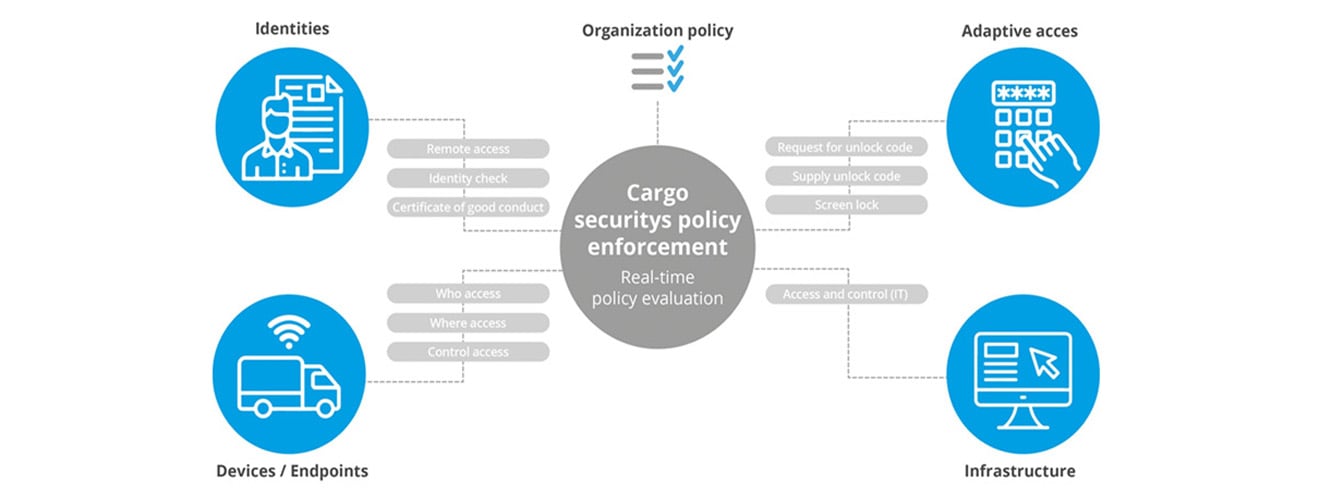
Zero Trust in cargo transport: never trust, always verify

How do you get started with Zero Trust transportation security?
When you want to start implementing Zero Trust in freight security, you first need to set out the cargo security arrangements in your company policy. Which people are able to access certain goods using which devices?
Examples of questions a carrier should ask themselves include:
- How do I give access to the cargo remotely, for example via the planning department?
- How do I check that the person wanting access is also actually the person that he says he is?
- Do I have the right people working for me?
Transport securtiy based on access control
If you transport cargo in a secured trailer, that doesn’t guarantee that it’s also secure. Some electronic locks are not secure in the slightest. They have the same codes throughout transportation to the destination, so that different drivers can open the lock. But these drivers can therefore also easily pass on these codes to others (i.e. unauthorised individuals).
Example how some electronic locks work:

Electronic locks based on the Zero Trust principle don’t have this problem, as they are built on the basis of access control. When you fit locks based on the Zero Trust principle, the security of your goods is guaranteed. Only pre-determined individuals may open the lock at a particular moment during transportation by means of personal authentication and verification. The codes are therefore always unique and personal.
Example how electronic locks can work:






